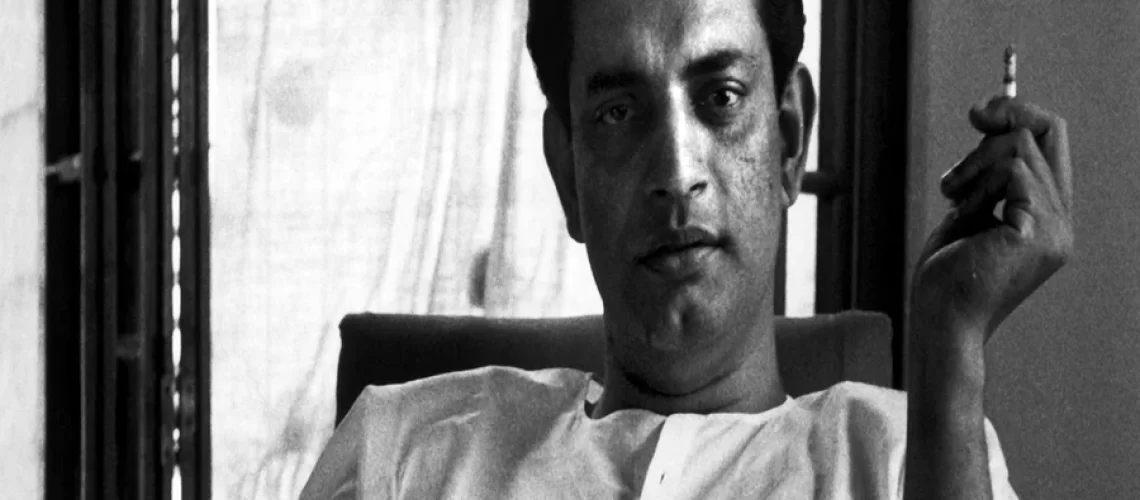“There’s always a room for improvisation” – Satyajit Ray
Last Sunday, I planned to go out for a movie and this time it was Aparajito, the movie recently released in the theatres depicting Satyajit Ray’s life in a nutshell. I want to simply put that this movie has doubled my appetite for watching Ray’s timeless classics all over again. The above quotation is such a simple yet concrete life lesson that I have learned watching Ray’s movies all over again from the scratch.
Watching Ray has always been special as I am from a Bengali household. Our parents and grandparents are all so driven by this name and his contributions to the Bengali Cinema. Let me remind you all that this person has been known as the maestro of the World Cinema and why it is so, has been explained in the subsequent part of the blog with reference to his four classic movies.
Being a director of the Bengali Film industry, he is widely known as the maestro of the world cinema. Why Ray’s movies have created a cult in the cinema world, we will discuss it here because many of his masterpieces are not even widely explored by the Indian movie goers. Bengalis have engraved this name on their minds but why not other communities in India? It is not like that India is deprived of the cinephiles but the very reason is that these films are unexplored and not popularly discussed in the different cinematic platforms.
Let’s dive into Ray’s background to look further what dragged him into the world of cinema. He hailed from a prestigious family. Sukumar Ray was his father who was a poet and illustrator. His journey as an artist set out from Kala Bhavan in Shanti Niketan. His humanism and realism in the cinema made him the prodigy of the World Cinema. His cinematic journey has been sculpted in the minds of the cinephiles and his ideas and the methodical approach have become the subject of the film studies irrespective of any demographical barriers.
Pather Panchali (Song of the Road)
How many times have you thought about this film? This film alone got 18 awards in a row; the first-ever film screened at the Cannes festival. This man took the Indian Cinema to a Foreign land and received unfeigned admiration from the audience across the world. What was there in the film, let me tell you that this film has brought neo-realism through a picturesque village.
This story was adapted from Bibhutibhushan Bandyopadhyay’s novel Pather Panchali. The urban society often ignores the simplistic lifestyle of the village and on other hand, village people are deprived of modern facilities. Apu and Durga, the main characters of this film, exhibited a simple yet spontaneous reaction throughout the film.
The specialty lies in the screenplay and the way music is juxtaposed in the film. The special scene where Apu and Durga heard some strange sound and they ran after it like they would explore something terrific. That sound was from a passing train. This is how refined the storyline is and all the characters did the complete justice to their roles under Ray’s guidance. This film, which was set in rural Bengal, enriched many hearts because of the realism portrayed effortlessly.
Mahanagar (The Big City)
Ray was consistent with his concept of feminism during that era when Bengali families or literally any household from other communities believed that women were meant for their household duties. Ray’s feminism and putting his actress on a different pedestal have been phenomenal. Such a character was drawn in the film, Mahanagar (The Big City), adapted from Narendranath Mitra’s Abatarnika.
This film was shot in 1963 when a woman could hardly think of going out for a job. Ray endowed his character named Arati in this film with such strength that she took the saleswoman job to keep her household running. This film stood out as the most feministic stance taken by Ray during the era when the industry was mostly patriarchal.
The dialogues of the film broke the middle class and gender-biased sentiment. This film brought the revolution against the mentality of keeping the women as stay-at-home wives or mothers. Ray’s finesse in the character making could be easily noticed by his flawless method of storytelling.
Mahapurush (The Holy Man)
How many times have you believed in something so superstitious because some Indian “baba” has asked you to do something superficial to resolve your problems? We have all heard of such funny and dumb stories from people around us. Tantra Shastra has the deepest meaning but fake people wearing a noble mask try to befool others for money.
The film, we are talking about, is Mahapurush by Satyajit Ray, the story taken from Parashuram’s Birinchibaba. This film put a Hindu religious family and a dim-witted person in the backdrop. The main plot unraveled that a self-proclaimed saint blindfolded someone and led a person in the path of ultimate darkness. This false holy man in the central character was shown duping his followers.
This film by Ray was another take on addressing the social problems wherein religion often takes over the educated mind.
Agantuk (The Stranger)
Throughout this journey of film narration, we have reached the cul-de-sac point. Agantuk was the last film of Ray narrating normal household affairs and what happens when a stranger comes into our family. Utpal Dutta played the role of the stranger by calling himself the long-lost uncle of Anila, the character enacted by Mamata Shankar.
The significance of this film lies in the method which has been proved time and again as the most intellectual and compelling in nature. The man, who claimed to be a knowledge bearer and philosophical at the same, raised so many eyebrows, and this is what the film is revolved around. Utpal Dutta, being the most composed and knowledgeable person, got into the realm of the character and so were Mamata Shankar, Dhritiman Chatterjee, and Dipankar De.
Reflection
Watching Ray has been a quintessential journey because these films bring the wholesome regular problems from our lives. The abstract ending in many of his films leaves us speechless because life is uncertain and so are the problems in life. Ray stated, “The only solutions that are ever worth anything are the solutions that people find themselves”.


1 thought on “Satyajit Ray and 4 of His Timeless and Classic Films”
Liked this. Interestingly, Mahapurush, and Agantuk, are two of the classics relevant in today’s society as well.